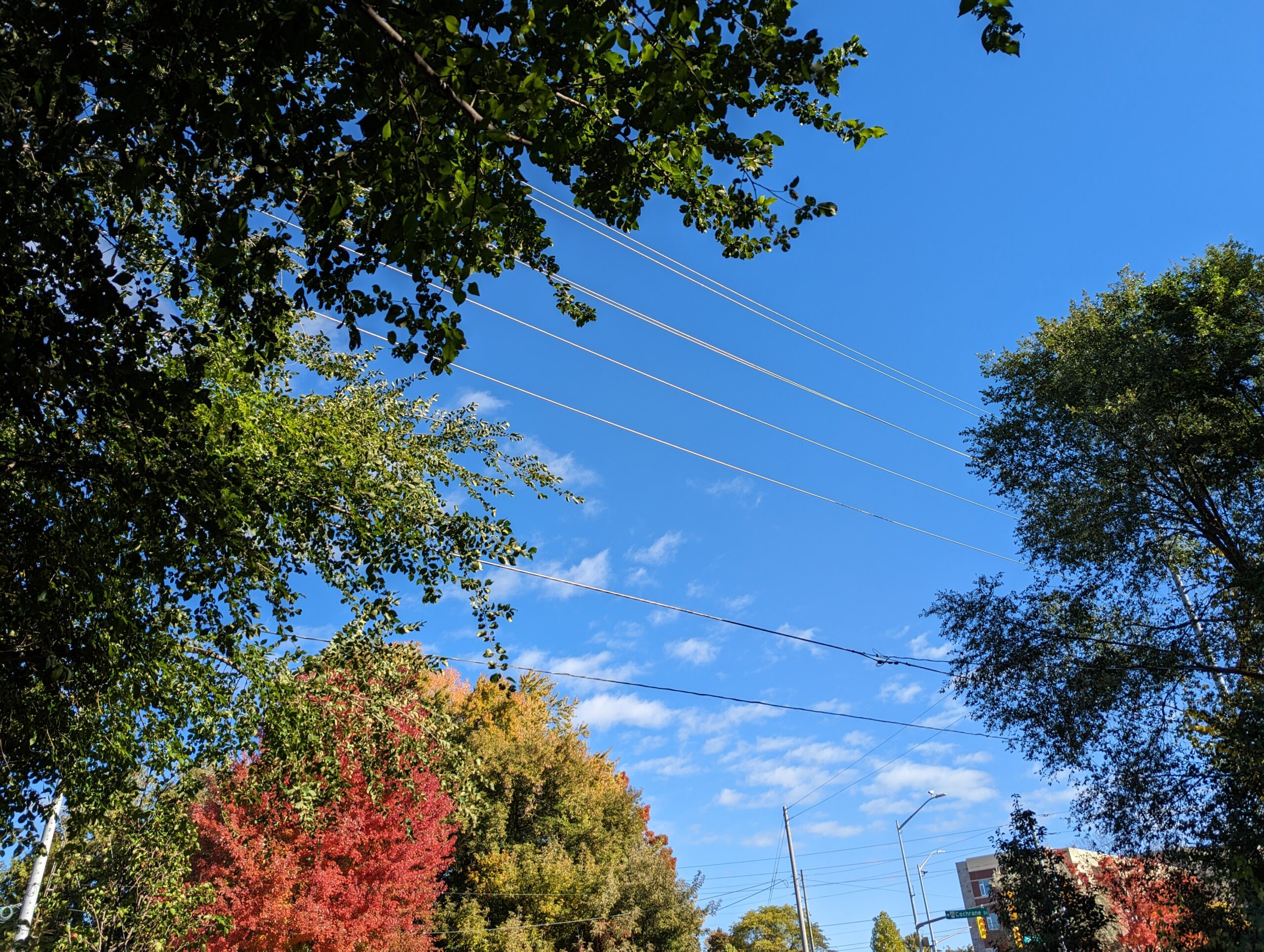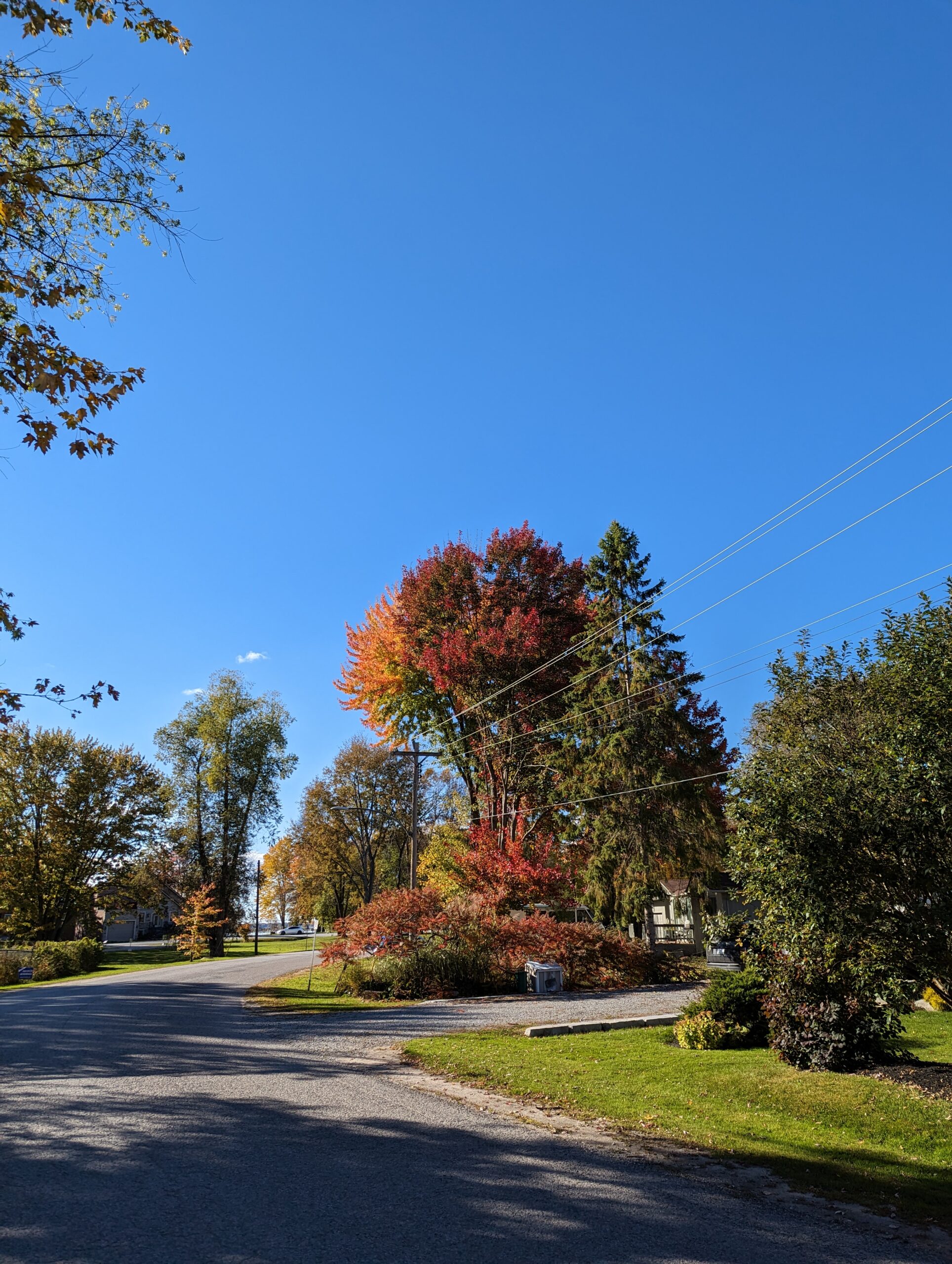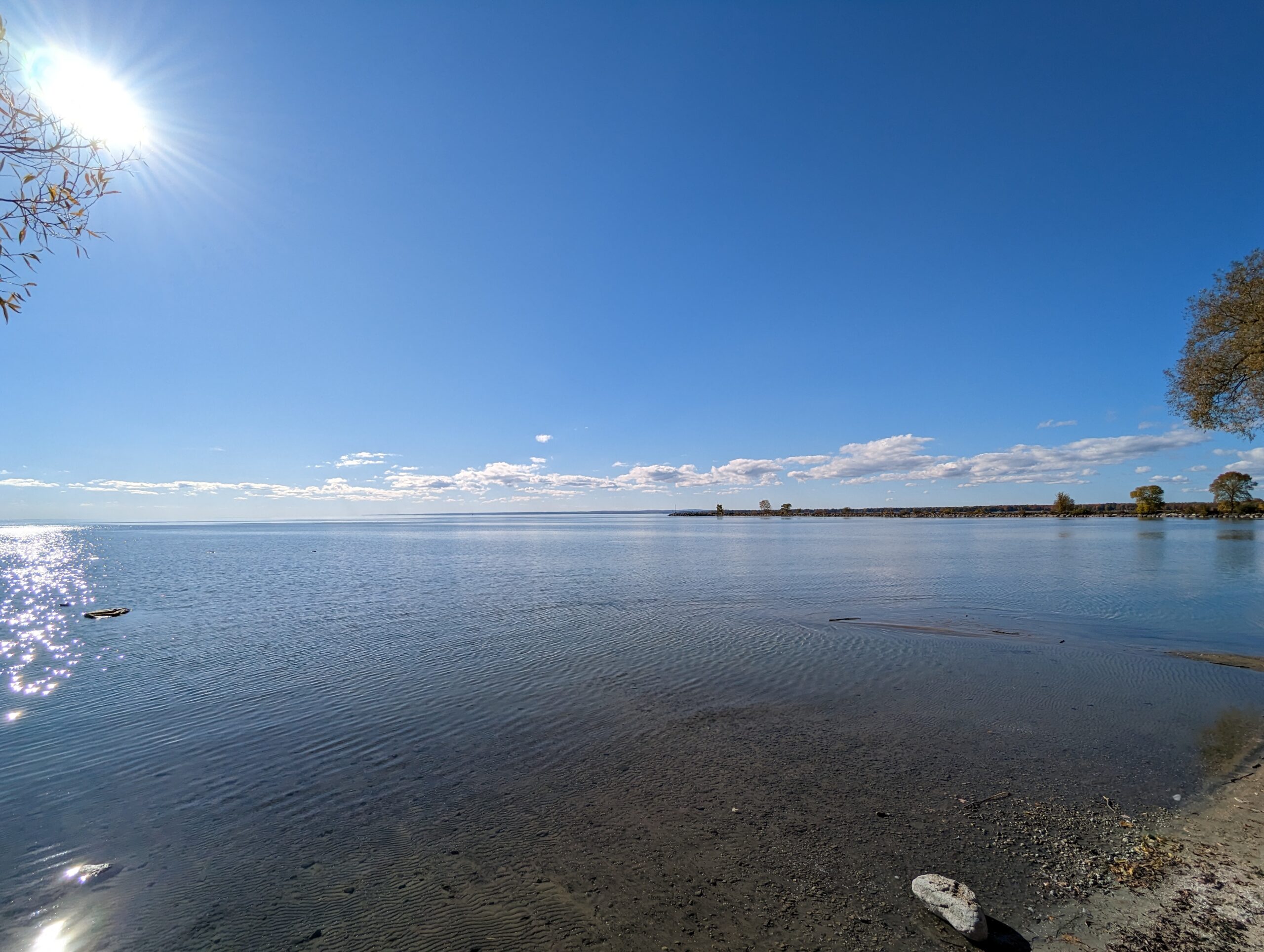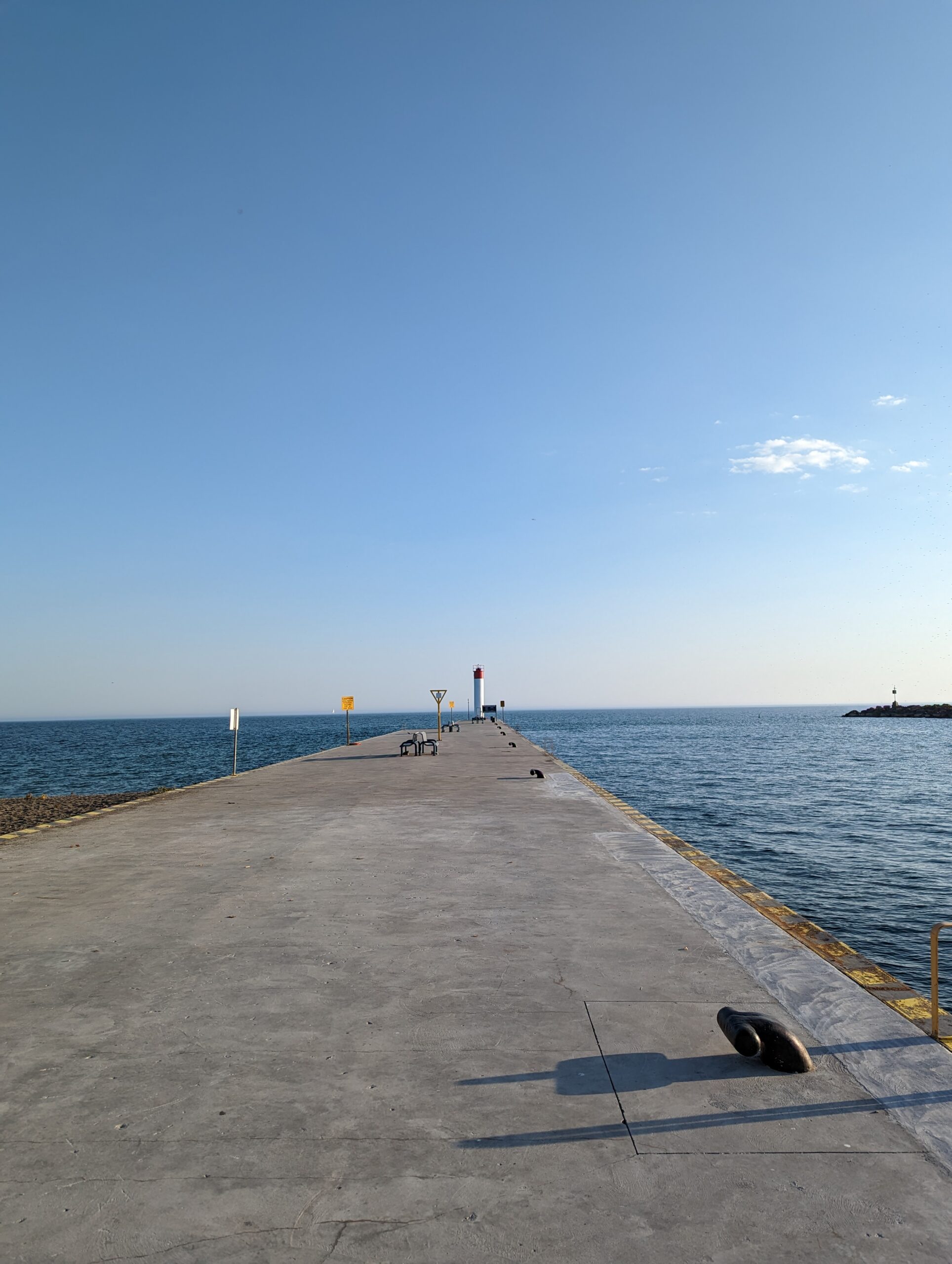The Pros
- More polished design
- Camera improvements
- Same great price
The Cons
- Battery life could be a problem for some
- Still only a 90Hz display
- Slippery back panel
It feels like Google’s Pixel line finally got a boring, iterative update — an ‘S’ year, if you will — and it may be the best thing to happen to Google’s smartphone line in a long time.
The ‘S’ year term comes from Apple’s old pattern of launching a big iPhone update followed by a minor, iterative update denoted with an S (iPhone 5, iPhone 5s, iPhone 6, iPhone 6s, etc.). That naming scheme has gone away, and the pattern has changed, but the general cycle of big updates followed by iterative updates remains.
The Pixel 7 is most definitely an ‘S’ update, boasting almost exactly the same design as the Pixel 6, but with a few minor tweaks and improvements (plus a few new features mostly enabled by an improved Tensor chip and software). Some might be inclined to criticize Google for pulling an Apple and rolling out an iterative update, but I think it’s exactly what the Pixel line needs.
Here’s the thing: the Pixel line hasn’t had a truly recognizable identity. Most people can identify an iPhone when they see one. To a lesser extent, Samsung’s Galaxy S phones have a consistent, recognizable design. Aside from the two-tone back panel, each Pixel phone has looked fairly unique
![]()
Like it or not, Google has chosen the Pixel 6 design with its recognizable camera visor and decided to stick with it. And by avoiding the effort of redesigning the phone this year, it’s allowed Google to refine the Pixel 6 design into something better on the Pixel 7, as well as bring quality improvements to other areas of the phone.
If you want to learn more about the Pixel 7 Pro, check out the full review here. You can also read the Pixel Watch review here.
Specs
![]()
Pixel 6
Pixel 7
Pixel 7 Pro
Pixel 6a
Display
6.4-inch FHD+ (1080 x 2400) OLED display, 411ppi, 90Hz refresh rate
6.3-inch FHD+ (1080 x 2400) OLED display, 416ppi, 90Hz refresh rate
6.7-inch, (1440 x 3120) QHD+ display, 512ppi, 10-120Hz refresh rate
6.1-inch FHD+ (1080 x 2400) OLED display, 429ppi, 60Hz refresh rate
Processor
Tensor
Tensor G2
Tensor G2
Tensor
RAM
8GB of RAM
8GB of RAM
12GB of RAM
6GB of RAM
Storage
128GB, 256GB
128GB, 256GB
128GB, 256GB, 512GB
128GB
Dimensions (in.)
160.4 x 75.1 x 8.2mm
6.1 x 2.9 x 0.3in (155.6 x 73.2 x 8.7mm)
6.4 x 3.0 x 0.3in. (162.9 x 76.6 x 8.9mm)
152.2 x 71.8 x 8.9 mm
Weight
207g
197g (6.9oz)
212g (7.5oz)
178 grams
Rear Facing Camera
50-megapixel (primary) + 12-megapixel (ultrawide)
50-megapixel (primary) + 12-megapixel (ultrawide)
50-megapixel (primary) + 48-megapixel (telelphoto, x5 zoom) + 12-megapixel (ultrawide)
12.2-megapixel (primary) + 12-megapixel (ultrawide)
Front Facing Camera
8-megapixel
10.8-megapixel
10.8-megapixel (ultrawide)
8-megapixel
OS
Android 12
Android 13
Android 13
Android 12
Battery
4,600mAh
4,355mAh
5,000mAh
4410mAh
Network Connectivity
LTE/ 5G
LTE/ 5G
LTE/ 5G
GSM / HSPA / LTE / 5G
Sensors
Fingerprint (in-display), accelerometor, gyro, proximity, compass
Fingerprint (in-display), accelerometor, gyro, proximity, compass
Fingerprint (in-display), Face Unlock, accelerometor, gyro, proximity, compass
Fingerprint (in-display), accelerometor, gyro, proximity, compass, barometer
SIM Type
Nano SIM, eSIM
Dual SIM (single nano-SIM and eSIM)
Dual SIM (single nano-SIM and eSIM)
Nano SIM, eSIM
Launch Date
October 28, 2021
October 13, 2022
October 13, 2022
July 28, 2022
Misc
Colours: Kinda Coral, Sorta Seafoam, Stormy Black | IP68 water and dust resistance
Colours: Obsidian, Snow, Lemongrass
Colours: Obsidian, Snow, Hazel
No headphone jack / colours: Chalk, Charcoal, Sage
Display
Pixel 6
6.4-inch FHD+ (1080 x 2400) OLED display, 411ppi, 90Hz refresh rate
Pixel 7
6.3-inch FHD+ (1080 x 2400) OLED display, 416ppi, 90Hz refresh rate
Pixel 7 Pro
6.7-inch, (1440 x 3120) QHD+ display, 512ppi, 10-120Hz refresh rate
Pixel 6a
6.1-inch FHD+ (1080 x 2400) OLED display, 429ppi, 60Hz refresh rate
Processor
Pixel 6
Tensor
Pixel 7
Tensor G2
Pixel 7 Pro
Tensor G2
Pixel 6a
Tensor
RAM
Pixel 6
8GB of RAM
Pixel 7
8GB of RAM
Pixel 7 Pro
12GB of RAM
Pixel 6a
6GB of RAM
Storage
Pixel 6
128GB, 256GB
Pixel 7
128GB, 256GB
Pixel 7 Pro
128GB, 256GB, 512GB
Pixel 6a
128GB
Dimensions (in.)
Pixel 6
160.4 x 75.1 x 8.2mm
Pixel 7
6.1 x 2.9 x 0.3in (155.6 x 73.2 x 8.7mm)
Pixel 7 Pro
6.4 x 3.0 x 0.3in. (162.9 x 76.6 x 8.9mm)
Pixel 6a
152.2 x 71.8 x 8.9 mm
Weight
Pixel 6
207g
Pixel 7
197g (6.9oz)
Pixel 7 Pro
212g (7.5oz)
Pixel 6a
178 grams
Rear Facing Camera
Pixel 6
50-megapixel (primary) + 12-megapixel (ultrawide)
Pixel 7
50-megapixel (primary) + 12-megapixel (ultrawide)
Pixel 7 Pro
50-megapixel (primary) + 48-megapixel (telelphoto, x5 zoom) + 12-megapixel (ultrawide)
Pixel 6a
12.2-megapixel (primary) + 12-megapixel (ultrawide)
Front Facing Camera
Pixel 6
8-megapixel
Pixel 7
10.8-megapixel
Pixel 7 Pro
10.8-megapixel (ultrawide)
Pixel 6a
8-megapixel
OS
Pixel 6
Android 12
Pixel 7
Android 13
Pixel 7 Pro
Android 13
Pixel 6a
Android 12
Battery
Pixel 6
4,600mAh
Pixel 7
4,355mAh
Pixel 7 Pro
5,000mAh
Pixel 6a
4410mAh
Network Connectivity
Pixel 6
LTE/ 5G
Pixel 7
LTE/ 5G
Pixel 7 Pro
LTE/ 5G
Pixel 6a
GSM / HSPA / LTE / 5G
Sensors
Pixel 6
Fingerprint (in-display), accelerometor, gyro, proximity, compass
Pixel 7
Fingerprint (in-display), accelerometor, gyro, proximity, compass
Pixel 7 Pro
Fingerprint (in-display), Face Unlock, accelerometor, gyro, proximity, compass
Pixel 6a
Fingerprint (in-display), accelerometor, gyro, proximity, compass, barometer
SIM Type
Pixel 6
Nano SIM, eSIM
Pixel 7
Dual SIM (single nano-SIM and eSIM)
Pixel 7 Pro
Dual SIM (single nano-SIM and eSIM)
Pixel 6a
Nano SIM, eSIM
Launch Date
Pixel 6
October 28, 2021
Pixel 7
October 13, 2022
Pixel 7 Pro
October 13, 2022
Pixel 6a
July 28, 2022
Misc
Pixel 6
Colours: Kinda Coral, Sorta Seafoam, Stormy Black | IP68 water and dust resistance
Pixel 7
Colours: Obsidian, Snow, Lemongrass
Pixel 7 Pro
Colours: Obsidian, Snow, Hazel
Pixel 6a
No headphone jack / colours: Chalk, Charcoal, Sage
Cut from the same cloth
At least the ‘Snow’ Pixel 7 doesn’t show finger smudges as much.
The Pixel 6 and 7 are so similar, it’s hard to argue anyone should make the upgrade from the 6 to the 7. Looking at the two phones specifically could help someone choose between the newer Pixel 7 or save some money with the Pixel 6 (if they can find it on sale elsewhere since it’s no longer available from Google). Plus, understanding what’s different between the Pixel 6 and 7 helps focus on what’s improved on the latter.
First, there’s the design. As I mentioned, these phones look incredibly similar, with a glass front and back (made with Gorilla Glass Victus this time) and a camera visor sporting two cameras — a primary 50-megapixel shooter and a 12-megapixel ultrawide. The Pixel 7 sports a matte aluminum frame just like the Pixel 6, although this time around, the frame sports different colours matching the phone’s back panel. The Pixel 6 had a matte black frame regardless of the phone’s colour.
Moreover, the frame wraps around and covers the camera visor this year, adding a more unified look. Aside from looking better, I think the aluminum camera bar adds a level of protection compared to the glass visor on the Pixel 6.
Just as slippery
![]()
The Pixel 7 didn’t carry on the tradition of a two-tone back with a different colour above the camera bar (arguably, the visor itself now acts as the second colour tone). The smartphone remains just as slippery as the Pixel 6, although the slightly smaller size makes it a little easier to grip for the small-handed folks like myself.
The Pixel 7 is a little lighter, smaller, and narrower too, which helps in that regard. That’s in part because the screen is slightly smaller (6.3-inch vs 6.4 on the Pixel 6).
Still, you’ll want to invest in a good case. Google has not brought back the matte glass textures that made previous Pixels so wonderfully grippy, and that remains one of my biggest gripes with the Pixel 7.
As an example of how slippery the Pixel 7 is, it slid off my counter with no provocation and tumbled a few feet onto tile floor. Despite ending my multi-year streak of not dropping review phones before the review went live, the Pixel 7 didn’t break (although the tile did put a sizable scratch in the aluminum frame). Another reason to get a case: the frame is durable, but scratches easily.
Better display, but still 90Hz
Pixel 6 (left) and Pixel 7 (right).
Despite being a nearly identical display on paper, the Pixel 7’s screen seems to be more high-quality than the Pixel 6. The 6.3-inch FHD+ 1080 x 2400 pixel resolution OLED screen is the same resolution as the Pixel 6, but with a slightly higher pixel density.
However, where it really stands out is brightness, both low and high. The Pixel 7 boasts up to 1,000 nits brightness for HDR and 1,400 nits peak brightness. I found the display to be very viewable outdoors in my brief time with it. On the low end, I also noted that the Pixel 7 doesn’t exhibit the discolouration issues the Pixel 6 did.
If you haven’t noticed this for yourself, the Pixel 6 screen (and many of the 90Hz panels featured in past Pixel phones) often showed discolouration at low brightness, especially with grey tones like the ones commonly used throughout Android’s dark mode. The most common seemed to be a slight green tint to grey shades, but I’ve noticed purple tints too. Regardless, the OLED panel in the Pixel 7 appears to be higher quality and more consistent than the Pixel 6 display.
As someone who prefers the smaller Pixel phones, it’s a nice change of pace not to be disappointed (and actually to be happy) with the display in the smaller Pixel model this year.
Not a battery champ, but it gets the job done
![]()
Like the exterior design, the inside of the Pixel 7 didn’t see many significant changes. Like the Pixel 6, the Pixel 7 sports 8GB of RAM and 128 or 256GB of storage. However, Google did bump up the processor with its new Tensor G2 chip.
The search giant claims Tensor G2 has lower power consumption than Tensor while also boosting performance. For the power consumption claim, well, it really comes down to how you use the phone. I do think there’s something to the lower power consumption as the battery seems to be doing about as well as, if not better than, my Pixel 6 on average despite being smaller (4,355mAh vs. 4,600mAh in the Pixel 6).
Despite having a smaller battery, the Pixel 7 surprised me with battery life that matched or beat the Pixel 6. Unfortunately, it’s tough to make a good assessment in just five days, so I’ll be keeping a close eye on it going forward, but initial impressions are good.
I made it to the end of most days with about 40 percent left in the tank and about four hours on average of screen-on time. Heavy users could likely drain the battery quicker, but it’s been good for me so far.
Fly like a G2
![]()
On the performance side, Tensor G2 benchmarked better than the Tensor chip, with my Pixel 7 clocking 1,023 single-core and 3,004 multi-core scores in Geekbench. The Pixel 7 Pro my colleague Dean Daley reviewed scored slightly better.
Interestingly, the single-core score was about on par with the Pixel 6, 6a and 6 Pro, which all landed around the 1,020 mark, while the Tensor G2 was about 200 points better with multi-core.
Widening the lens to look at other devices sporting chips from Qualcomm and Apple, Tensor G2 remains on the lower end in terms of performance. That’s not a huge surprise, though, given that Google’s focus with Tensor G2 is to boost the Pixel’s on-device machine learning (ML) capabilities.
Those capabilities are central to core Pixel features like Google Assistant, voice typing, translation, and various camera functions – most of which Google improved in some way with Tensor G2.
Before we move on, it’s also important to keep in mind that benchmarks seldom tell the whole story. Even though the Pixel 7 loses on the performance front, it always felt snappy. Moreover, it handled my daily use with ease, which includes messaging friends and family, taking pictures and videos of my daughter, work tasks like email and Slack, watching the occasional YouTube video, browsing social media, listening to music or podcasts, and even playing some games like MTG: Arena.
Small improvements to an already excellent camera
![]()
One area that saw a lot of benefits from Tensor G2 was the Pixel 7 camera. The handset once again has a 50-megapixel primary sensor and a 12-megapixel secondary sensor, both of which perform very well.
![]()
In most side-by-side comparisons, the Pixel 7 and Pixel 6 produce very similar results from the rear cameras. However, not all is equal.
![]()
For example, Google introduced a new zoom technique in the Pixel 7 which uses sensor cropping to produce a “zoomed” image. For most pictures, the Pixel 7 (and 7 Pro) use pixel binning techniques to create a 12-megapixel image from the 50-megapixel sensor, effectively turning every four pixels on the sensor into roughly one pixel in the image.
With 2x zoom images, however, the Pixel 7 captures an image using just part of the sensor. This sensor crop can make the subject of a photo look closer than it actually is by effectively shrinking the sensor. It’s not truly ‘zoom,’ but then neither is typically smartphone zoom. Regardless, zoom shots from the Pixel 7 provided more clarity than the Pixel 6 thanks to this technique. Moreover, the Pixel 7 Pro does this with the 58-megapixel telephoto shooter to hit 10x zoom, but you’ll need to check out Daley’s 7 Pro review to learn more.
Another area that benefited from Tensor G2 was Night Sight, which now processes twice as fast. Trying Pixel 6 and 7 side-by-side, the Pixel 7 is noticeably faster. Interestingly, the Pixel 7 camera app also has a slightly different Night Sight UI that lets you select how long it captures.
![]()
In my test, it captured in three seconds, but I also did another test at the maximum five seconds. The five-second Night Sight was closer in quality to what the Pixel 6 produced, although it still felt slightly faster (but not as fast as the three-second Night Sight).
The Pixel 7 also boasts a better 10.8-megapixel selfie camera, the same as what’s in the Pixel 7 Pro. However, in side-by-side comparisons, the Pixel 7 and 6 selfie camera results were nearly identical. The Pixel 7 selfie camera does have an ultrawide option, which is helpful for taking group selfies.
![]()
Google says it improved Real Tone on the Pixel 7 as well, expanding the data set with over 10,000 new images to improve how the camera captures various skin tones.
![]()
There are several improvements on the video side as well, including 10-bit HDR, 4K 60fps recording support, Active Stabilization, Cinematic Blur and more. You can learn more about some of these in the Pixel 7 Pro review. I haven’t had enough time to play with these but look for a more in-depth look at the video features to come.
5G and other things
![]()
Beyond the camera features, the Pixel 7 offers improvements in other areas. The Recorder app can now automatically add speaker labels to make it easier to identify who said what when reviewing transcriptions.
Similarly, the Pixel 7 features faster ‘Direct My Call,’ which improves the experience of navigating option menus when calling a business. There are also ML enhancements to calls, which Google dubs ‘Clear Calling.’ Unfortunately, I haven’t tested this as much as I’d like in the last five days, but the calls I received sounded clear, and the person on the other end could hear me well too. (Update 2022/10/18: Clear Calling hasn't actually arrived yet, so my limited calling tests don't account for any improvement from Clear Calling.)
Pixel 7’s face unlock doesn’t do much to change the experience with the phone. Since it just relies on the camera and doesn’t use extra hardware (like the iPhone or the Pixel 4) to increase security, the Pixel 7 face unlock only works for unlocking the screen. The fingerprint scanner is still required for more secure features, like authenticating payments or unlocking secure apps (banks, password managers, etc.).
The only real benefit is that the face unlock often works faster than the fingerprint scanner, which means unlocking the Pixel 7 is surprisingly fast. Moreover, kudos to Google for setting up the system so that tapping the area where you scan your fingerprint also opens the phone once it’s been unlocked with your face – most of the time I try to unlock the phone with my thumb and face unlock beats the fingerprint scanner to it, but the phone still unlocks seamlessly.
![]()
A common issue people had with the Pixel 6 was with its signal; at least so far, it seems like the Pixel 7 has improved that too. Over the Thanksgiving long weekend, I visited family in the Brechin, Ontario area and noted I had more bars and better service on the Pixel 7 than I had on previous trips with the Pixel.
Moreover, running Ookla Speedtests on Bell 5G at my apartment in Whitby, Ontario, yielded slightly better results on the Pixel 7, with an average download speed of about 130Mbps and an upload of about 6Mbps, compared to about 100Mbps and 4Mbps, respectively on the Pixel 6. That said, I had noticed previously on my Pixel 6a, which also sports a first-gen Tensor chip, that I had better speeds in Toronto than in Whitby. I haven’t had a chance to compare the Pixel 7 in Toronto yet.
Still, it seems like Tensor G2 at least somewhat improves signal issues, but as I’ve said before, 5G in Canada remains underwhelming.
Pixel, refined
Ultimately, the Pixel 7 does a great job building on the foundation Google laid with the Pixel 6. It may be an iterative update, but as I said up top, I think this is what the Pixel line needs.
I liked the Pixel 6 a lot when I reviewed it, with most of my complaints being minor issues or related to buggy initial software. The Pixel 7 delivers that experience with improvements and polish that make using the phone a smoother, more enjoyable experience.
If you bought a Pixel 6 last year, there really isn’t anything the Pixel 7 does that makes it worth upgrading to. Even still, if you can get a deal on the Pixel 6, it’s arguably worth getting over the Pixel 7 given the minor improvements (plus, Google will likely bring some of the new features to the Pixel 6 via future software updates).
But if you have an older Pixel phone and held off on an upgrade to the Pixel 6 over bugs and other issues, the Pixel 7 may be a better bet thanks to the added polish.
Moreover, the Pixel 7 has me excited to see how Google continues to build out the Pixel line and expand the ecosystem in the future.
Google’s Pixel 7 starts at $799 in Canada.
"The Pixel 7 may be an iterative update, but I think it's what the Pixel line needs."
MobileSyrup may earn a commission from purchases made via our links, which helps fund the journalism we provide free on our website. These links do not influence our editorial content. Support us here.
























